What is Industry 4.0?
)
Separating the bluster from the buzzwords is often challenging. Just because a term is heard widely and used often, doesn’t make it meaningful, and it doesn’t mean that everyone who uses it knows what it means.
When people claim what they are offering is part of “Industry 4.0” it often comes with connotations of revolutionary advancement and big changes. To help you measure the substance against the style, here is an overview of exactly what is meant by Industry 4.0 to help you know the difference between blusterful bluffing and exemplary engineering.
What are the characteristics of “Industry 4.0”?
The biggest change in Industry 4.0 is about technology that controls itself independently in ways never before possible. To test whether a given technology is really part of Industry 4.0 or not, you need to ask if it has any of the following criteria:
- Self-monitoring – Technology that can track and follow its own position and progress, using suites of sensors and advanced software. This information is then relayed to computer control systems, allowing them to make well-informed and carefully calculated decisions.
- Self-configuration – Technology that can use the information gathered by its sensors to adjust and direct its own operations. Advanced software makes this possible, with the help of wireless connections to powerful remote computer systems.
- Self-optimising – Technology that can analyse and understand the complete sweep of ongoing operations, and then from all that data, choose the correct set of decisions that will make things faster, more economical, and more efficient. All with the aid of advanced software controlling the robots via wireless connections.
- Self-diagnosing – Technology that can determine whether a problem has arisen in its own system, what that problem might be, and how best to correct it.
While these are perhaps the four most important aspects of Industry 4.0, these four are not the source of the name ‘Industry 4.0’. To understand that, we need to look into history.
Why 4.0?
The ‘4.0’ part of the name is making the claim that a piece of technology or a new kind of service is something born from the fourth industrial revolution. The three before being roughly categorised as follows:
- Industry 1.0 – The Mechanical Production Revolution – Beginning in the 1750s, applying steam and water power to production techniques. First to textiles, then agriculture, mining, and metalwork manufacture. Pioneers in this age were people like Josiah Wedgewood with his pottery factories, James Hargreaves with the Spinning Jenny, and James Watt with his coal-fired steam engine.
- Industry 2.0 – The Technological Industrial Revolution – Starting in the 1860s, connecting mass transit, internal combustion, and electricity to create mass-market manufacturing and national-scale supply chains. This saw the birthplace of modern factories and allowed for people like Henry Ford and Isambard Kingdom Brunel to make their marks.
- Industry 3.0 – The Digital Informational Revolution – Originating in the 1940s, the development of the computer allowed for digital involvement in the manufacturing process. Advanced industrial automation was powered by the technological legacies of Alan Turing, whose work became even more accessible thanks to the likes of Bill Gates.
To claim something as “Industry 4.0” is to suggest it is part of the next step in industrial development. A huge deal, considering all the changes and shifts brought about by the previous waves. So the next question you have to ask when saying “is something Industry 4.0?” is whether or not it is truly revolutionary.
What makes something revolutionary?
A revolution is where everything changes. For industrial revolutions, this is seen when a group of different developments, which independently are impressive but not ground-breaking, all come together to create a whole that is bigger than the sum of its parts.
For example, with Industry 1.0, the power of coal was well known, as was the usefulness of a spinning wheel. It was putting these ideas together, along with notions about mass production and large scale industry that sparked something new. Something much more than a faster way to make clothes.
In the same way, Industry 4.0 is made up of technologies that already exist, but arranged in new ways. Technologies like the following:
- Wireless connectivity – Wifi, 4G, and 5G
- Sensor suites – LIDAR, infra-red, and ultrasonic
- SLAM navigation – Simultaneous location and mapping software
- Machine vision – Digital cameras and the software to make sense of what they see
Individually these developments are important, but far from groundbreaking. When combined, they create something with so much potential to make so many changes, it is nothing short of revolutionary.
Industry 4.0 for your business
Many people look at industry 4.0 as something far off and distant. A high minded idea that only really describes a trend being seen among tech giants. That is not the reality. Industry 4.0 isn’t coming. It’s already here, and small and medium-sized businesses are taking advantage now. The warehouse sector will be one of the first to be dramatically impacted, in the form of flexible automation.




